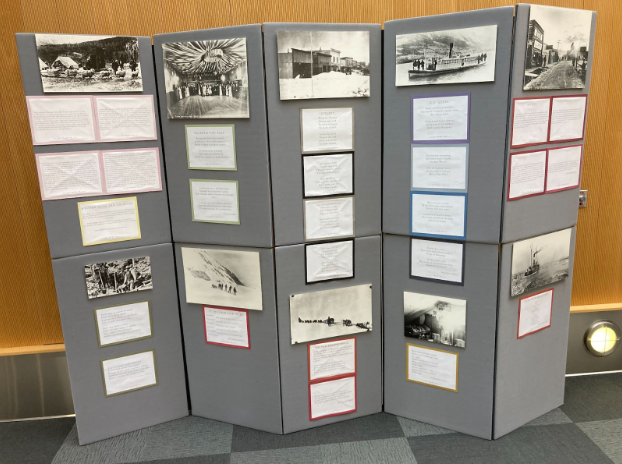Hello everyone! My name is Connor Benson and I have been interning here in the archives for the 2024 Spring semester. I am a senior here at UAA and am set to graduate next semester with a bachelor’s degree in history. This internship has been my first experience with anything hands on related to history and I had a great time. This blog post is going to detail some of things I have learned here in the archives.
Digitization is probably the largest project I have worked on. I first started with digitizing select slides from the Walston family slides collection. This whole process turned out to take much longer than one would expect. First you have to pick out slides that you think would be significant for a researcher to view on Alaska Digital Archives. Then once you have your images picked out you have to actually scan them and this process is quite complex. You have to make sure the scanner is free from debris like lint and then align them all correctly. Once in the scanner you have to make sure the file type and scan dimensions are correct and that the scans are in the correct orientation. Once this is all done then you have to input the metadata.
Coming into this internship I had no idea the vast amount of information that has to be entered to make an image easily accessible to researchers. The information that you need to enter is known as metadata and is both the most important and time consuming part of image digitization. It includes file name, identifier, collection name, title, description, contributor, citation, subject, personal name, corporate name, location, region, date, image type, language, rights, holding institution, date digitized, and more. That is a lot of information fields to fill out and it can take some time. It really made me appreciate all the work that goes into image digitization even if it might not seem like much on the surface. Here is an example of what completed metadata would look like on the Alaska’s Digital Archives website:

I also worked on creating an exhibit for display in the Consortium library. With the help of Becky Butler and the Creative Writing Club here at UAA I was able to put a display together. The theme of the exhibit was new faces looking at old images. Students from the creative writing club were given a selection of images used for a previous exhibit and each student chose one that inspired them. Then the students created an original creative writing piece that ranged from poems to short stories. I then put the works and images together to create an exhibit on the first floor of the Consortium library. Here is a photo of the completed display:

My favorite thing I have done in the archives however was completing collection descriptions for both the H.C. Curtis slides and photographs and Hector Manuel Hua Ortega photographs. Being the first person to unbox these donated collections and see what was previously lost to history was extremely fun. The ultimate goal I have for my career is to become an archaeologist, so writing these collection descriptions gave me a taste of what I am really striving for in a job.
Overall, I really enjoyed my time working in the archives. The variety of tasks I completed really helped to further my skills in the field of history. I feel that interning here will definitely aid in my career search once in graduate school in the fall. To end, I want to thank Becky Butler, Arlene Schmuland, and Gwendolyn Higgins for creating a very welcoming environment for someone who had never worked in an archives space before. It was because of their efforts that I looked forward to my time in the archives at the end of every week and made it not feel like work at all.


